MP Board Solutions for Class 10 Science Chapter 13 – Our Environment
MP Board Solutions for Class 10 Science Chapter 13 – Our Environment are essential for understanding key Environmental Science concepts in the MPBSE curriculum. These well-structured answers help students grasp topics like ecosystems, food chains, waste management, and the impact of human activities on the environment. Designed as per the latest syllabus, these solutions strengthen conceptual clarity and improve exam preparation. Ideal for revision and practice, they encourage logical thinking and scientific understanding, making them a valuable study tool for scoring well in Class 10 Science exams.
MP Board Solutions For Class 10 Science – Our Environment – Exercise Images
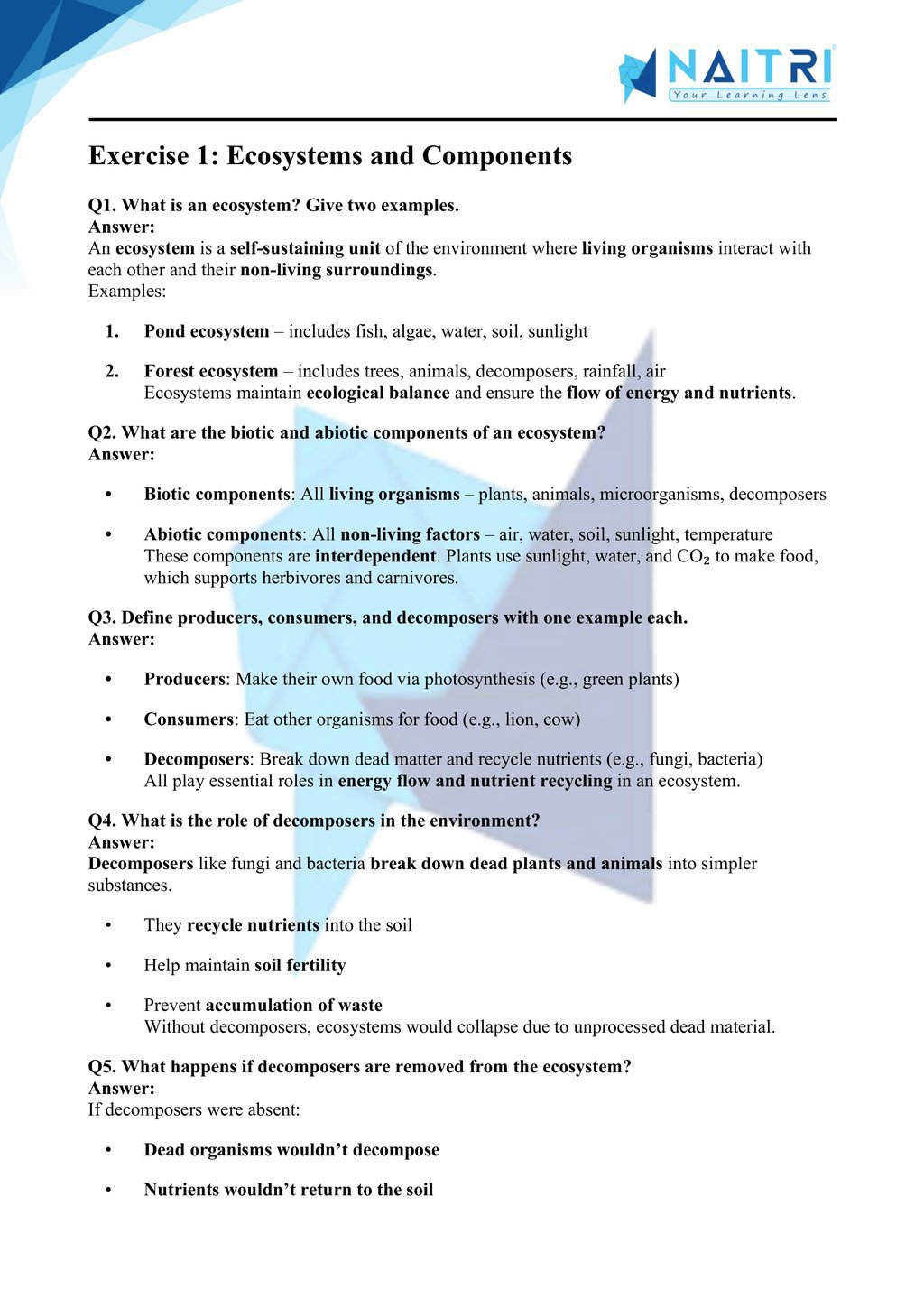
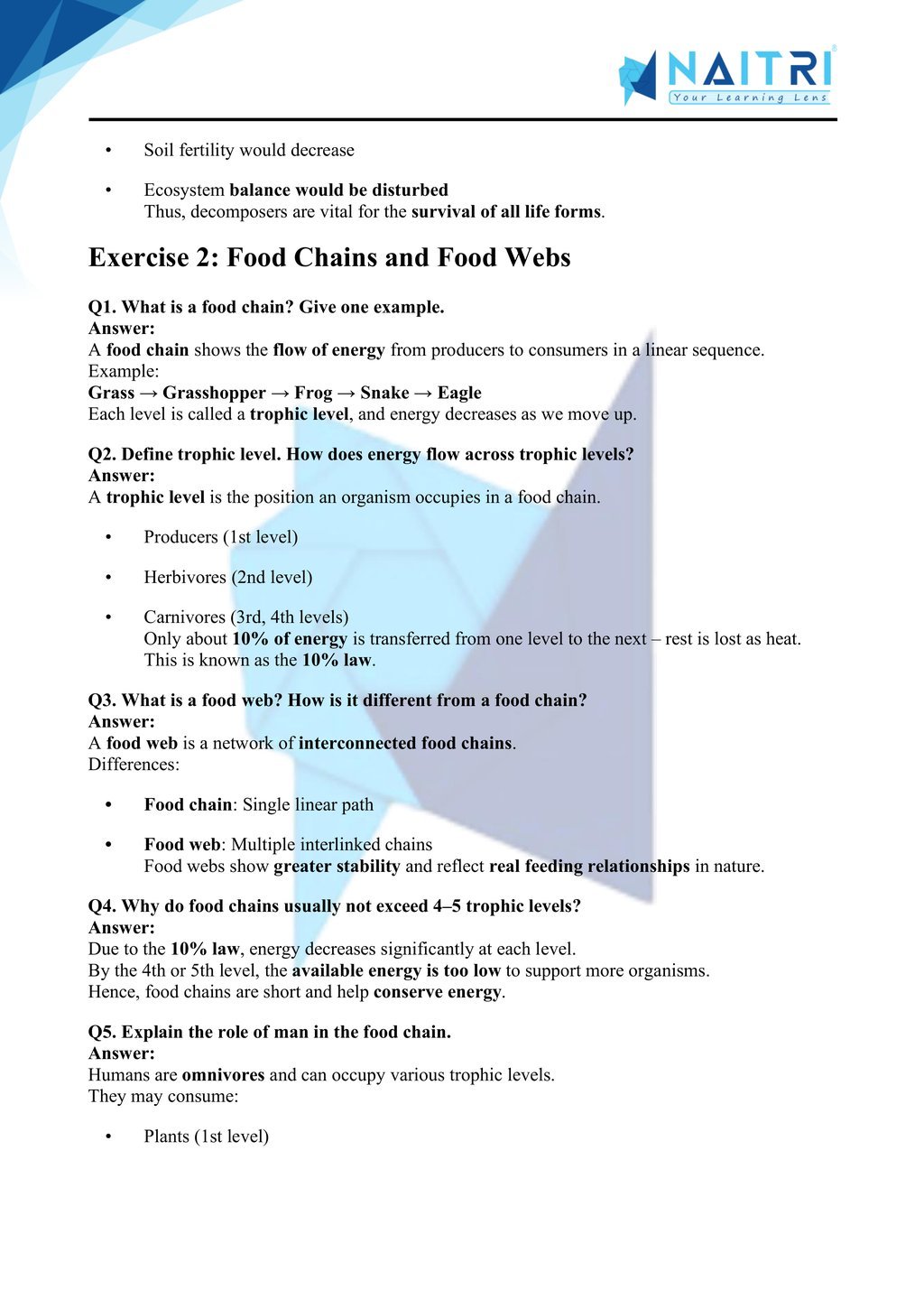
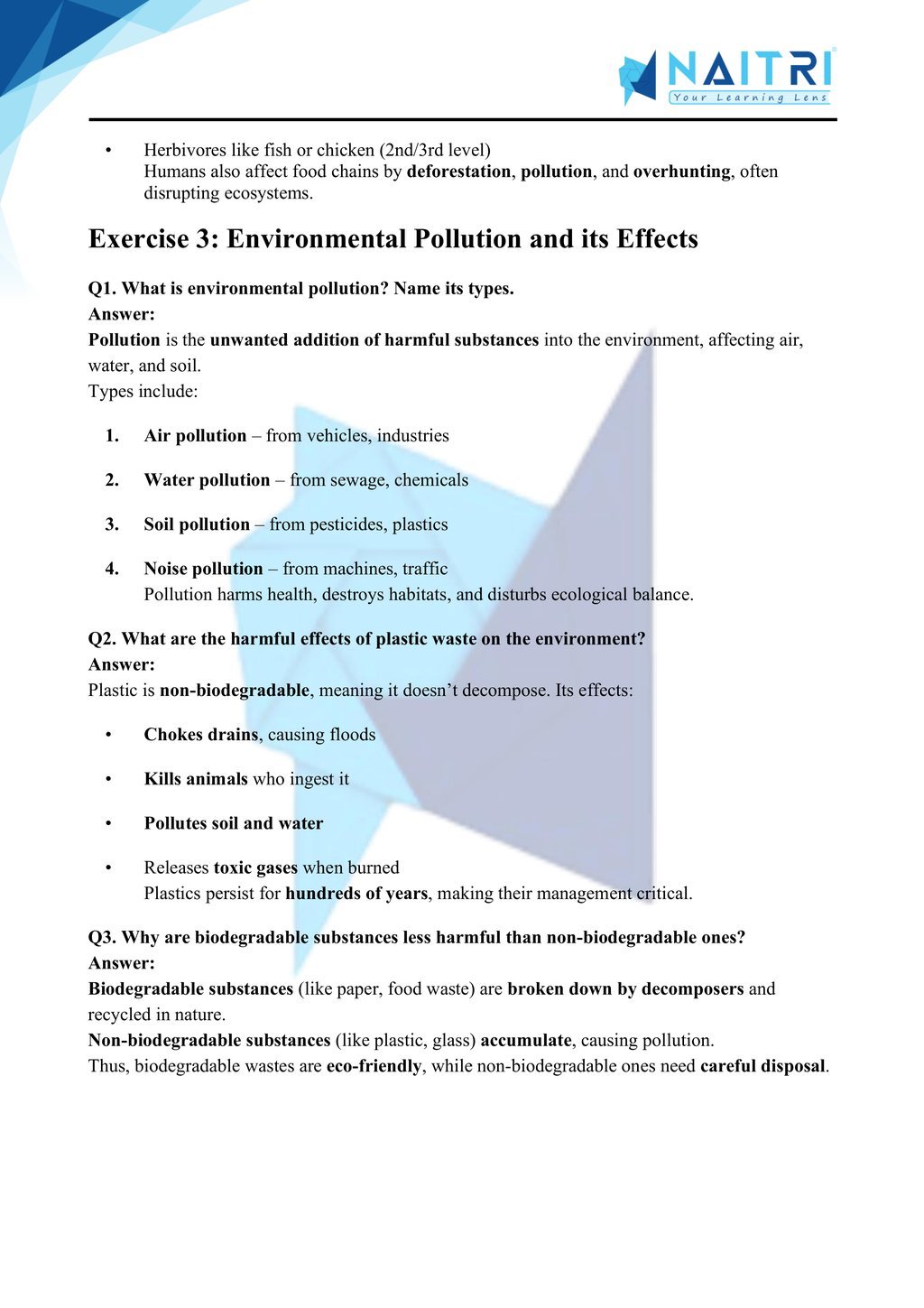
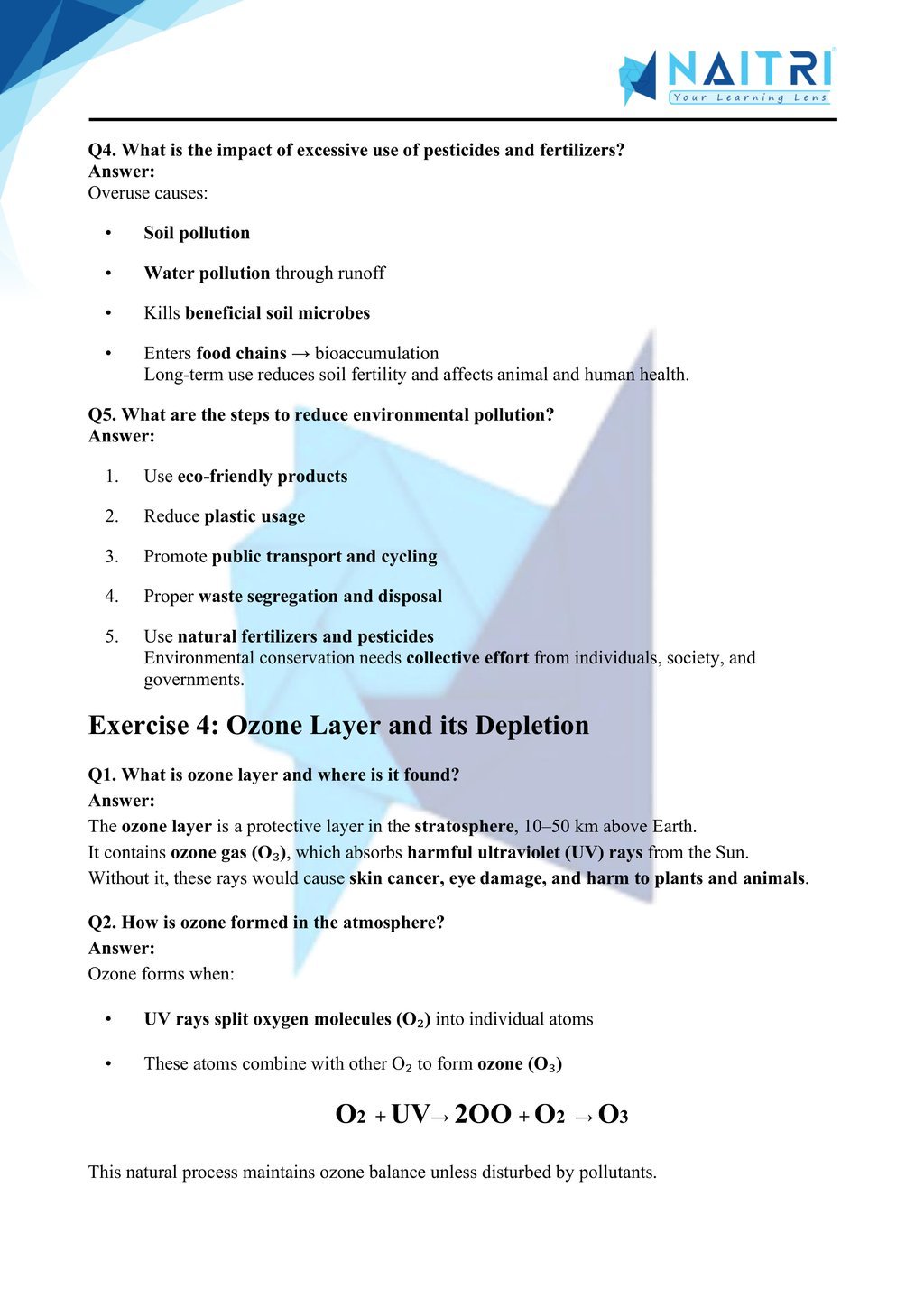
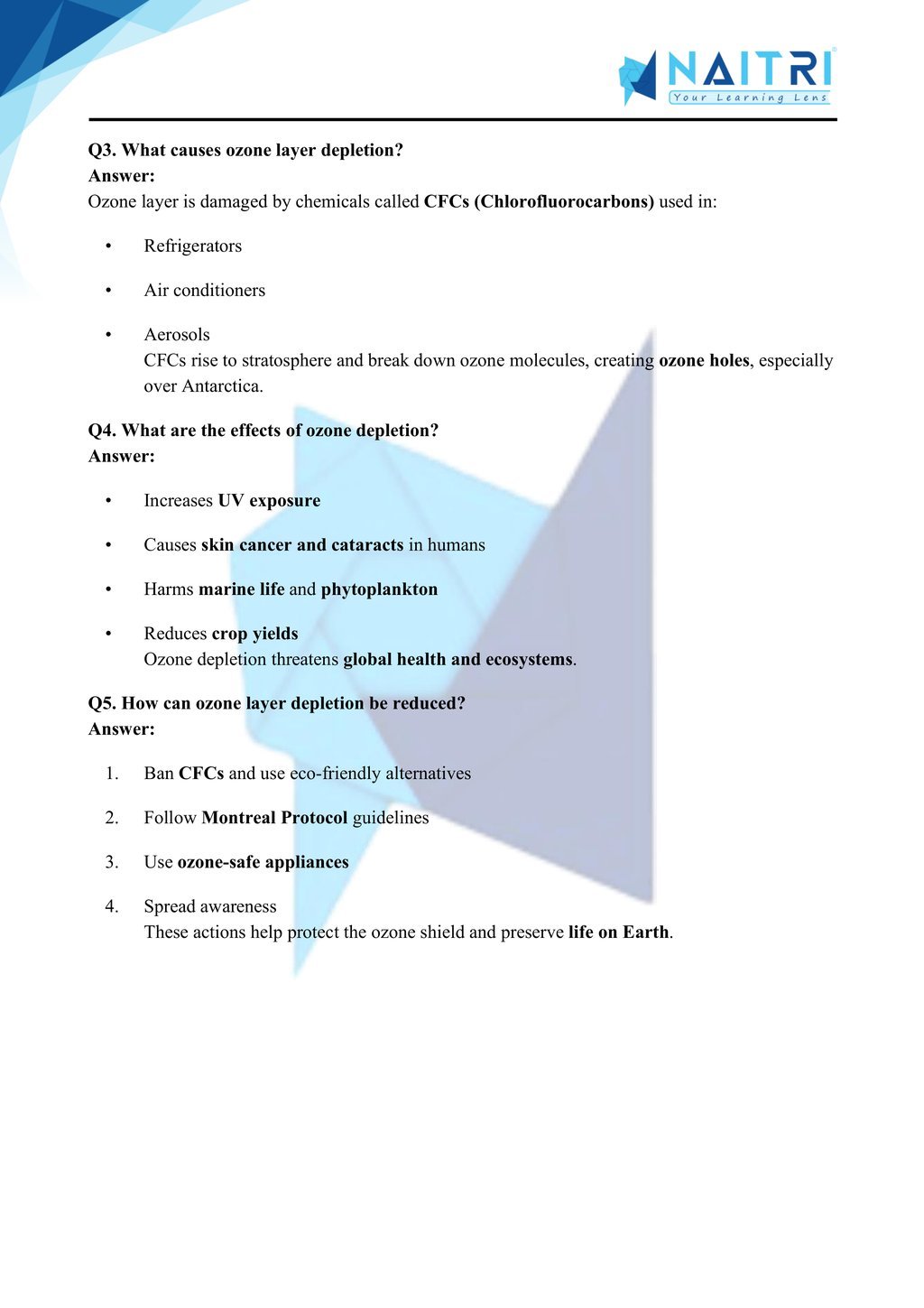
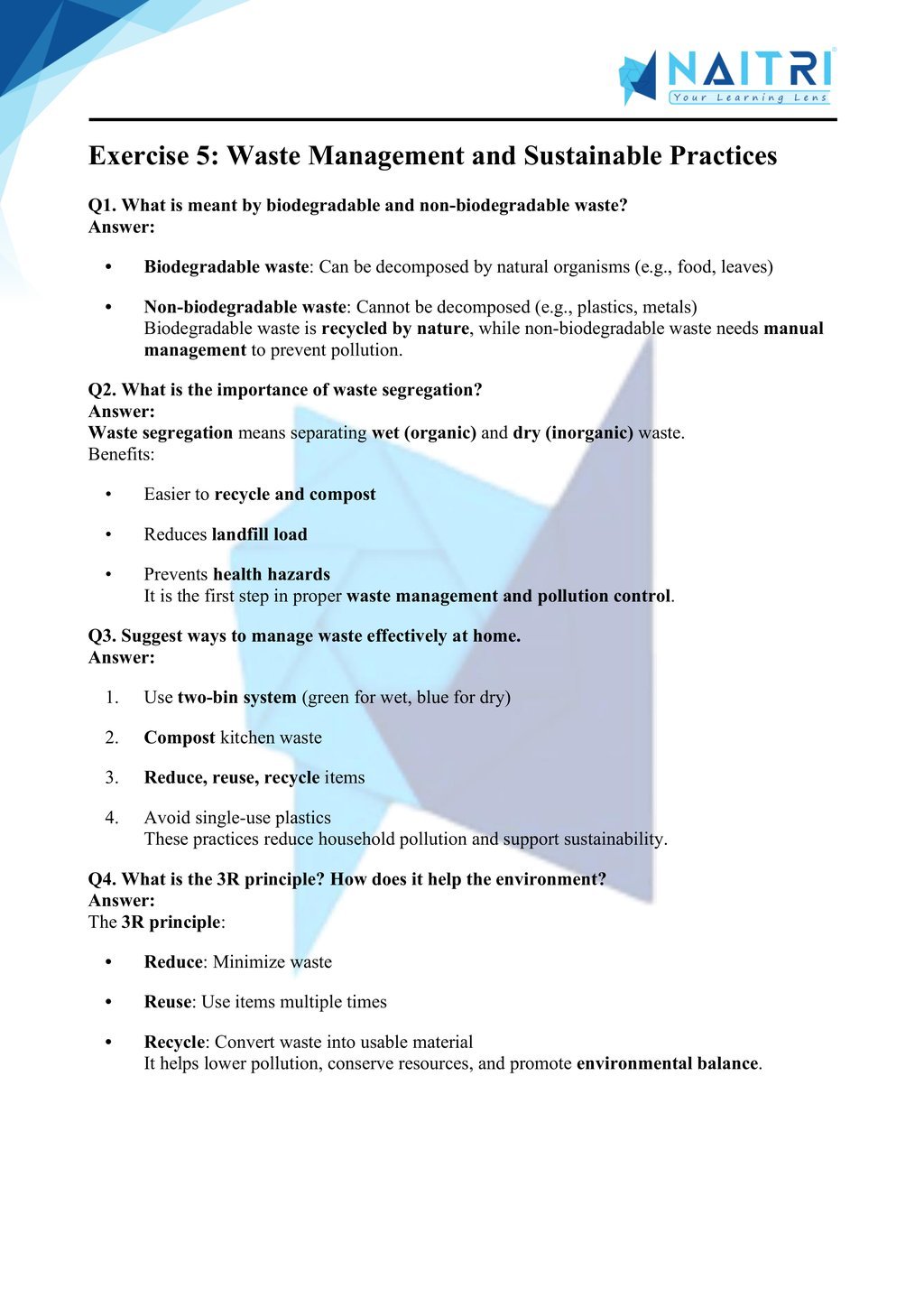
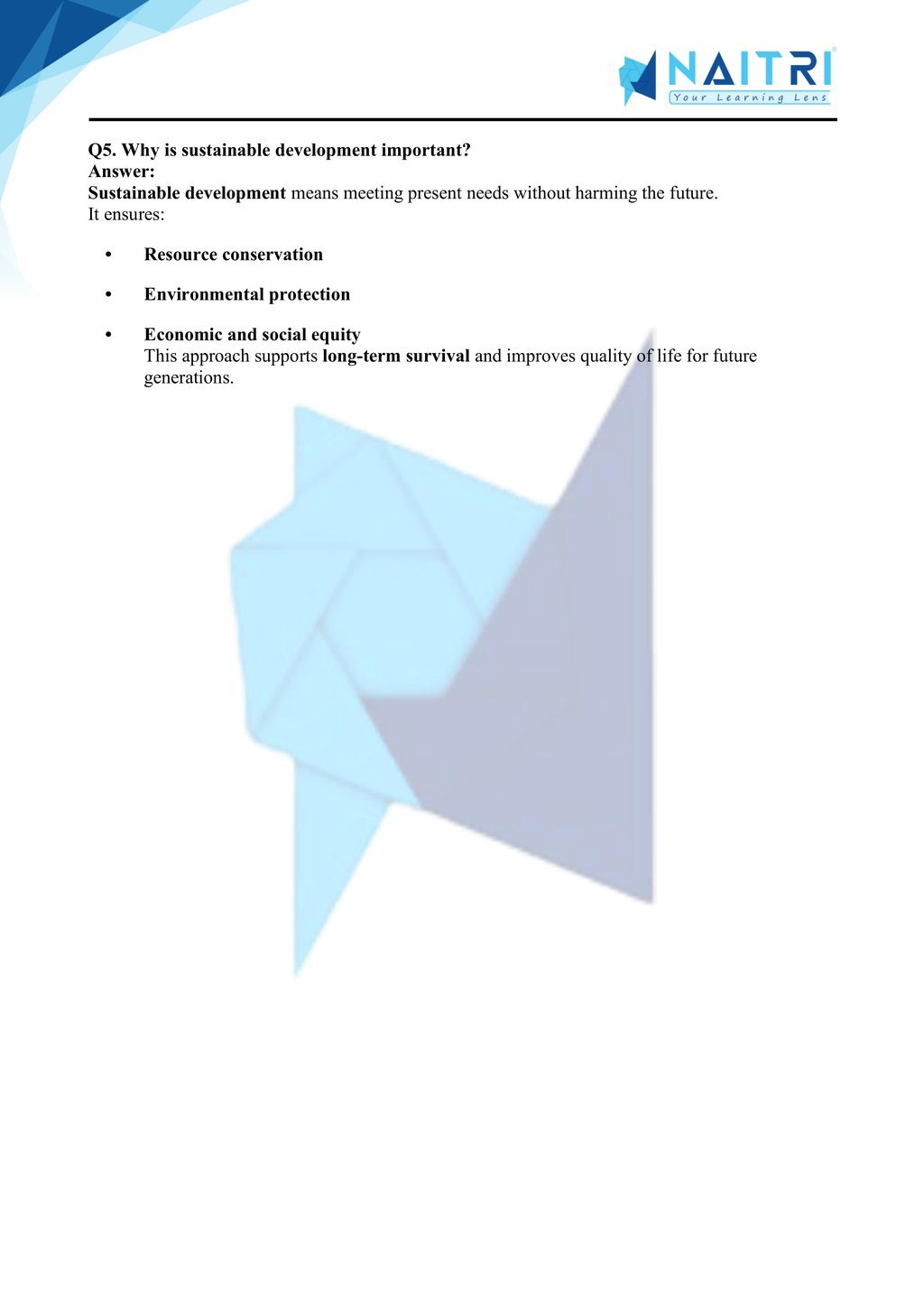
Experience Science Like Never Before – With AR!
Understanding Our Environment is now more exciting and immersive! With the NAITRI App, you can explore complex science concepts through Augmented Reality (AR). Explore ecosystems interact, food chains build, and pollution impacts revealed — right in front of you. Our AR-powered lessons make learning interactive, 3D, and fun, helping you retain concepts better and enjoy every topic.



Visualize . Interact . Understand . The future of learning is here
Our Environment – Important Questions with Answers
1. What is meant by the environment?
Answer: The environment includes all the living (biotic) and non-living (abiotic) components around us, such as air, water, soil, plants, animals, and human-made surroundings that affect our life.
2. Define ecosystem and give two examples.
Answer: An ecosystem is a system formed by the interaction between living organisms and their physical environment. Examples include a forest and a pond, where both biotic and abiotic components coexist.
3. Differentiate between biotic and abiotic components.
Answer: Biotic components are living organisms like plants, animals, and microbes. Abiotic components are non-living elements such as sunlight, water, air, and minerals that support life processes.
4. What are producers in an ecosystem?
Answer: Producers are green plants or autotrophs that use sunlight to prepare their own food by photosynthesis. They form the base of the food chain and supply energy to all organisms.
5. Who are consumers in the ecosystem?
Answer: Consumers are organisms that depend on other organisms for food. They include herbivores (primary), carnivores (secondary/tertiary), omnivores, and decomposers, which maintain the energy flow in nature.
6. Define decomposers and mention their role.
Answer: Decomposers are organisms like bacteria and fungi that break down dead plants and animals. They recycle nutrients into the environment and help in maintaining the balance of the ecosystem.
7. What is a food chain? Give an example.
Answer: A food chain is a linear sequence showing how energy flows from one organism to another. Example: Grass → Grasshopper → Frog → Snake → Eagle.
8. What is a food web? How is it different from a food chain?
Answer: A food web is a network of interconnected food chains in an ecosystem. Unlike a single path in a food chain, a food web shows multiple feeding relationships among organisms.
9. What is trophic level?
Answer: A trophic level represents a step in the food chain. Each level includes organisms that share the same function in the food chain and get energy from the level below.
10. Why is the transfer of energy in a food chain limited?
Answer: Because only about 10% of the energy at one trophic level is transferred to the next; the rest is lost as heat or used in life processes, limiting the number of levels.
11. State the 10% law in energy transfer.
Answer: According to the 10% law, when energy moves from one trophic level to the next, only 10% of the total energy is passed on, and 90% is lost as heat or used.
12. Define biological magnification.
Answer: Biological magnification is the process in which harmful substances like pesticides accumulate in increasing amounts at each trophic level of the food chain, becoming most concentrated in top consumers.
13. Why are decomposers important for the environment?
Answer: Decomposers recycle nutrients by breaking down dead organisms, clean the environment, and help maintain soil fertility, making them essential for ecosystem balance.
14. What is ozone? How is it formed in the atmosphere?
Answer: Ozone is a triatomic molecule (O₃) found in the stratosphere. It forms when ultraviolet (UV) rays act on oxygen molecules (O₂), splitting them into atoms that combine to form ozone.
15. Why is ozone layer important?
Answer: The ozone layer protects life on Earth by absorbing harmful ultraviolet (UV) radiation from the Sun, preventing skin cancer, cataracts, and other health issues in humans and animals.
16. What causes ozone layer depletion?
Answer: Ozone depletion is mainly caused by chlorofluorocarbons (CFCs) released from air conditioners, refrigerators, and aerosol sprays, which react with ozone molecules and destroy them in the upper atmosphere.
17. What are the effects of ozone layer depletion?
Answer: It increases UV radiation reaching Earth, leading to skin diseases, eye problems, reduced crop productivity, and harm to aquatic and terrestrial ecosystems.
18. How can we reduce ozone layer depletion?
Answer: By avoiding the use of CFCs, switching to eco-friendly products, maintaining cooling appliances, and promoting awareness about the importance of ozone and green practices.
19. What are biodegradable and non-biodegradable wastes?
Answer: Biodegradable wastes can be broken down by decomposers (e.g., food waste), while non-biodegradable wastes (e.g., plastic, metals) cannot decompose easily and persist in the environment for a long time.
20. Why is managing garbage a serious issue in urban areas?
Answer: Because of the excessive generation of non-biodegradable waste like plastics, poor segregation, and limited recycling, leading to pollution, health hazards, and harm to the environment.
21. How can we manage solid waste effectively?
Answer: By following 3Rs: Reduce, Reuse, Recycle; composting organic waste; avoiding plastics; and promoting waste segregation at the source for better recycling and disposal.
22. What is sustainable development?
Answer: Sustainable development means using natural resources in a way that meets current needs without compromising the ability of future generations to meet their own needs, ensuring long-term balance.
23. How does deforestation affect the environment?
Answer: Deforestation leads to loss of biodiversity, soil erosion, disruption of water cycles, increased carbon dioxide levels, and contributes to climate change and global warming.
24. Why should we avoid using plastic bags?
Answer: Plastic bags are non-biodegradable, clog drains, harm animals, pollute soil and water, and release toxic chemicals on burning. Eco-friendly alternatives like cloth or paper bags are better.
25. List two steps each individual can take to improve environmental health.
Answer: (1) Avoid using plastic and promote reusable products.
(2) Save energy and water, plant trees, and spread awareness about reducing pollution and protecting natural resources.
Our Environment focuses on ecosystems, food chains, and the impact of human activity on nature. It discusses biodegradable and non-biodegradable waste, pollution, and environmental balance. Students are encouraged to think critically about sustainability and responsible resource management.
Related Chapters You May Like
Download Naitri App
Easy, Visual Learning — Right on Your Phone
Learn with Augmented Reality! The Naitri app makes CBSE and MP Board concepts interactive and fun — even in low-resource settings. Watch lessons, complete homework, take tests, and track progress — all in one place. Anytime. Anywhere.
Available on








